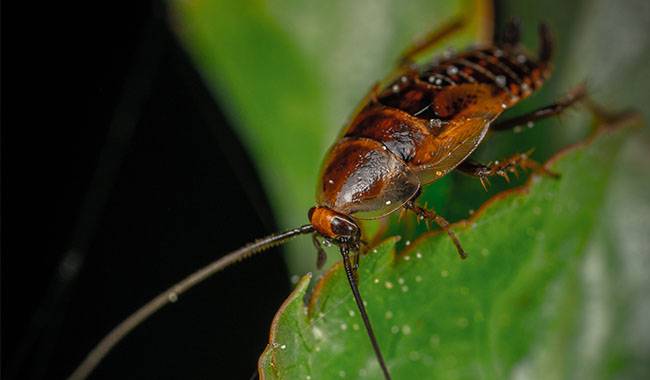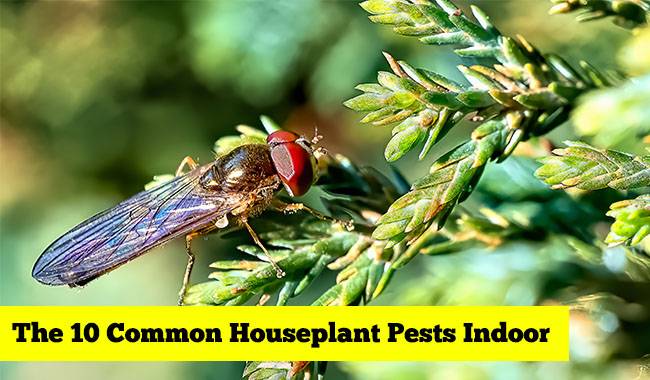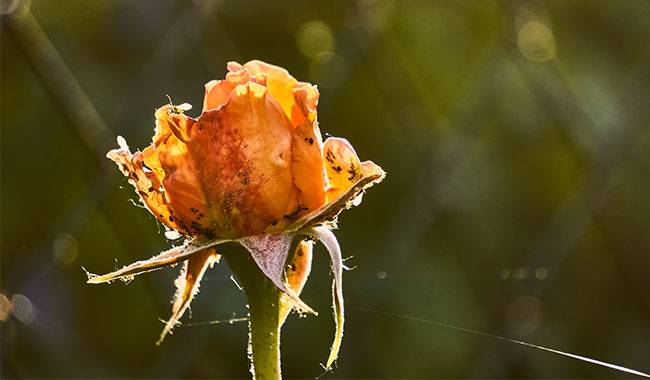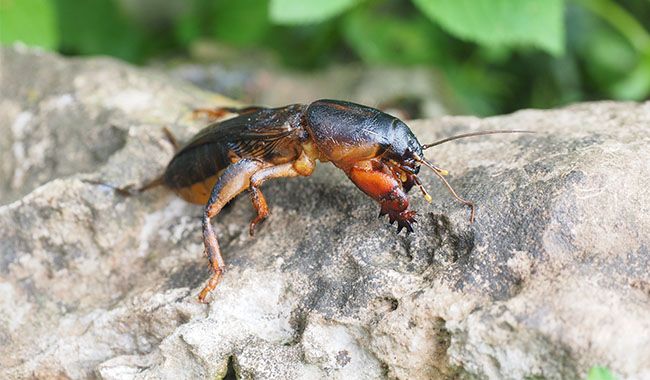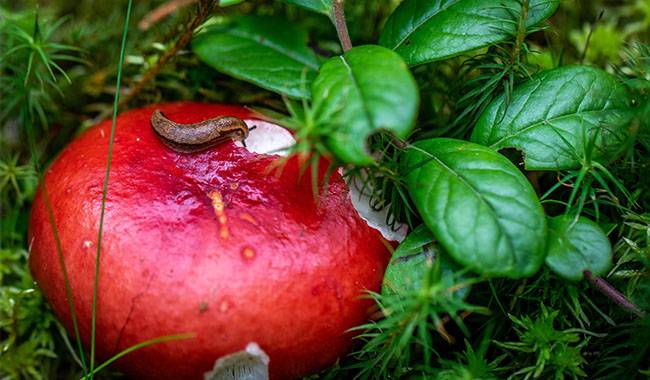
The slug is a beautiful-looking, slow-moving gastropod that evolution has stripped of its protective cover, i.e. Even a small shell, it has no poison in its body, but it has been endowed with extraordinary voraciousness and secretory powers.
And this gluttony causes a lot of problems for us gardeners and vegetable growers. The slug can devour everything that lives in the garden.
How can you limit the appetite of slugs? We will show you in this publication effective ways to control slugs in the garden.
SLUG BIOLOGY
In biology, the body of a slug has a head and a carapace, which has a mantle and a so-called leg. On the head, there are two pairs of tentacles, a shorter pair pointing downwards and a longer pair pointing upwards. On the long tentacles, there are eyes and receptors responsible for the sense of smell, while on the lower part – receptors allow you to determine the taste of food.
In the center of the head, there is an opening for the mouth. The mantle is located behind the head, and on the back of the mollusk, the mantle has a lung, a breathing hole slightly to the right, and not far from it, the anus. In fact, the legs are the lowest part of the slug’s torso, which it uses to move around.
The slug’s skin is very thin and always covered with mucus. If the mucus dries up, the slug will die. The coloration may vary slightly, such as sandy, gray, etc.
REPRODUCTION OF SLUGS
An interesting fact is that each slug is hermaphroditic, which means it has both male and female sex organs, but they still need to mate in order to lay eggs from which the complete slug will hatch.
The process is sometimes interesting, and during mating, slugs seem to dance and twist around each other to find a mate by a special scent that, according to scientists, is unique to each species, much like our fingerprints.
After mating (watch out!) ), they each lay dozens of eggs, using areas where the soil is strongly moistened for spawning, and within a month or less, the young slugs emerge from the eggs, feeding at first on what remains of the organic matter located in the soil. After a month and a half, each hatched slug larva has the ability to reproduce and lay eggs.
By the way, after the first clutch, slugs do not need to repeat mating; the “charge” gained is enough to lay several hundred eggs. Imagine the rate at which they can reproduce!
SLUG DAMAGE
The damage caused by slugs is particularly severe in the south, where often the above-ground parts of various cultures are completely destroyed. In the center and north, where breeding stops after the first frost and deposited eggs rarely survive the winter, their numbers are quite limited, which is why slug damage is not so great.
To ensure that slugs eat and digest all the plants in your vegetable garden, you need to keep them away from there throughout the warm season, which should be characterized by a warm early spring, a cool and rainy summer, and a fall and winter without critical frosts.
SLUG CONTROL MEASURES
There are a plethora of slug control measures available, from boot soles to chemicals, but it’s best to start with prevention. Perhaps by taking certain subtleties into account and understanding the biology of this pest, you will reach a situation where no more than a few slugs will miraculously appear on your property without causing any serious damage.
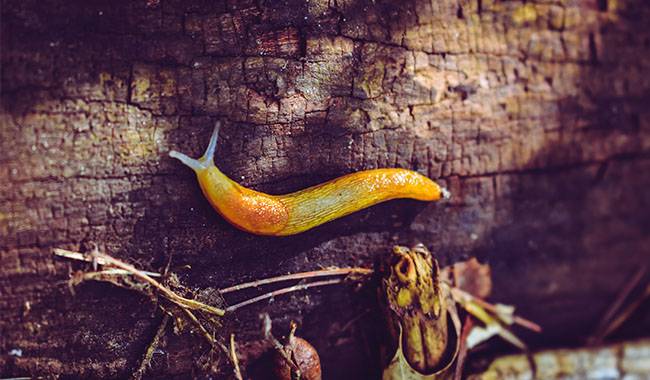
PREVENTIVE CONTROL MEASURES
The most important thing here is to follow the planting plan, not to let the plants grow too high, to fight with weeds, to keep the site in order, and not to over-water. Especially uncontrolled sprinkling, when setting sprinklers and water flying in all directions, generously wetting, what is necessary and what is not.
Don’t let the beds get overgrown with weeds, including those between the rows, which are a more convenient place for slugs to move and reproduce.
About November, just before frost, dig in the soil to the full extent of the spade’s bayonet and leave it that way until spring. Slugs are physically unable to hide very deep and they will die during the first winter along with the eggs they lay, so in the spring you will have few problems in eliminating this pest.
In the spring, you can dig up the plot again, or you can leave the soil undisturbed for at least a few days, which is necessary to complete that overwintering ovipositor – now it will just dry out in the hot spring sunlight.
If you have the opportunity, then all rows and garden paths, which are constant from year to year on the plot, can be covered with pins or small stones, for example, by breaking a few bricks. The fact is that slugs can move easily on a flat, wet surface, but in “sharp” dry areas, they can not move.
And of course don’t forget the birds, although they can cause damage by nibbling on cherry trees or buckthorn, destroying a part of the berry or pecan crop, at the same time they will destroy all the slugs they will see on-site, so you can additionally hang out feeders in the winter and then in the spring the birds will inevitably return to your garden.
Besides birds, hedgehogs also like to eat slugs, and you can arrange a very simple pond somewhere in your garden: just dig a plastic pot and fill it with water.
SLUG-PROOF PLANTS
According to some gardeners, slugs can even be scared off by the right plant scent, such as garlic, sage, and, of course, marigolds. You can plant these plants at the edge of a valuable vegetable bed and hope that slugs will get around them.
COLLECTING SLUGS MANUALLY
In addition to all of the above, you can always put your hand into slug control by simply picking up the slugs you find. However, keep in mind that they are cunning creatures, active at night and hiding in hidden corners during the day.
There is an easy way to find the – water the soil and place pieces of slate, cardboard, plastic, iron, and similar materials on its surface. If there are slugs in your garden in the morning, their entire population will be concentrated in the ideal, in their opinion, shelter.
Once found, dispose of the slugs as you see fit. On our land, we simply take them to the nearest planting site and it would be a shame to kill them.
PROTECTIVE WALL
A wall or barrier made of ordinary soil. It can be built around the perimeter of the plot, using soil that is in a moist state and does not lose its shape when it dries. In doing so, you can sprinkle spruce needles or, for example, perlite in front of and behind the barrier to make it as difficult as possible for slugs to cross over.
Instead of making walls, you can make grooves, say, two or three, a few inches apart, also 0.8-1inch (2-3 cm) deep and the same width, and in the bottom of these grooves, you can pour dry sand, the fine shell of any nuts, wood ash, etc.
It is possible to protect young trees with simple river sand, which is enough to enclose each tree in a small roller-like thing.
Oddly enough, water can also help with slugs, as they like things that are wet. To do this, cut an old watering hose lengthwise into the soil and fill it with water, preferably with edible salt (one tablespoon per liter). Generally, once slugs get into such a trough with water and salt, they can’t get out and die quickly.
BEER IS GOOD FOR YOU
Gardeners and vegetable growers say that beer helps fight slugs. The best solution is to use plastic bottles, which contain the least amount of natural substances but have a very strong smell that is attractive to slugs.
Before that, you need to strip the neck of the bottle so that the trap is wide, then pour 100-150 grams of beer and dig the bottle into the soil so that its edges are strictly flush with the soil. This is a real trap that can be compared to a tree trap strip.
One such trap can collect 90% of the slugs in your plot. For the slowest slugs, it is best not to bury or trim the bottle, but to keep it with the neck as close to the ground as possible.
OTHER FOLK REMEDIES FOR SLUGS
Prickly mountain pepper or its decoction. Prepare a pepper decoction by drying the pepper pods and grinding them – preferably with a coffee grinder. Then you should dissolve about 50 grams of the powder obtained in this way in a liter of water (you can buy it), let this composition last for three days, then put it on the fire, bring it to a boil, and after that let it remain for a few days.
Remember that such a decoction will keep well, so you can do it once – for the whole summer. All that remains is to strain the decoction, load it into a sprayer and spray the plants well in windless weather in order to keep it out of the eyes.
To avoid damaging the plants, the treatment should be done before or after flowering. If it is wet outside and there is no light in the clouds, but the slugs are annoying, you can add soap to the solution to create a clinging effect. About 20 grams of laundry soap per liter is sufficient.
Calcium superphosphate can be applied between the rows at a rate of no more than 20 grams per square meter, or you can add the same amount of slaked lime.
Sometimes a mixture of lime and tobacco powder is used successfully. The amount of both should be equal, amounting to about 50 grams per square meter. If lime and tobacco powder are not available, then a mixture of common wood ash and common tobacco can be used in the same quantity and manner. This mixture can be dusted not only between the rows but also on the plants themselves.
Iron sulfate is the real poison for naked slugs. For best results, iron sulfate must be mixed with river sand or ordinary mortar sand and spread around the perimeter of the plot. If a slug crawls into this mixture, it may die within seconds.
A mixture of soot (from a stove) and tar will produce the same effect. These two “ingredients” can be used either mixed with each other or separately. For example, tar – which has a well-known aroma – repels slugs, so sometimes it is enough to soak pieces of cloth in it and place these strips near or under plants.
Surprisingly, slugs are also fought with a simple pharmacy green. A bottle with enough water for ten liters is worth pouring it out, stir it well and the remedy for the plants is ready. To repel the smell of pests and ammonia, you need only five tablespoons per ten liters of water – this ingredient can also be sprayed on plants.
SWITCHING TO CHEMISTRY
Remember that chemicals not only have a negative impact on slugs, but also on the surrounding soil and plants, on useful insects, and to some extent on us, so turn to them in special situations when there are too many slugs on-site to deal with them by traditional control means.
The vast majority of slug killers are based on the pesticide formaldehyde. We strongly recommend using preparations approved for use, carefully studying the hazard class, which must be stated on the packaging of the preparation, always using protective gloves and masks if higher than class 3 (class 2-1), handling the site in windless weather, and strictly following the instructions on the packaging.
In those popular preparations for slug control, these are pellets or powders, and the formulation is usually lilacs. The slugs eat these pellets or powders and are quickly killed.
These preparations, like most other slug control products, have negative effects on birds and pets; they may not kill them, but they can seriously affect their health, and that’s definitely something to consider.
Also, if you use chemicals, do not use vegetables and fruits directly from beds or trees; you need to wash them beforehand, preferably in water heated to 95° F (35° C).
In addition to the above preparations, there is a known preparation based on iron phosphate (also in granular form, but more often blue) that works similarly, but is safe for pets and birds.




